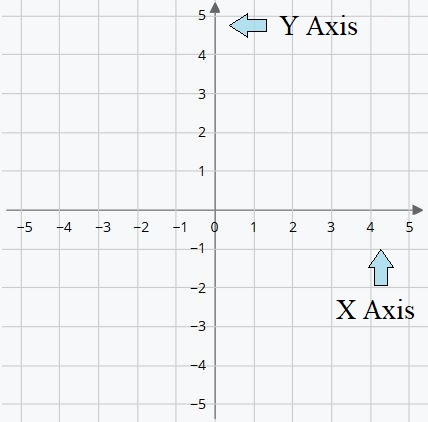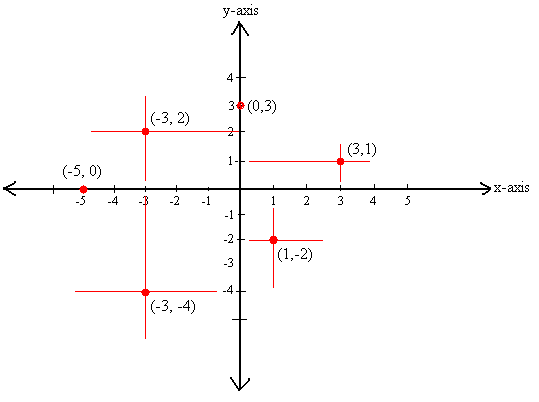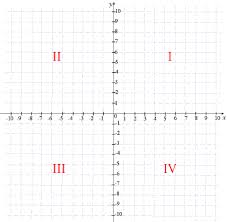Cartesian Coordinates
If you take two number lines that have zero in the middle and cross them at 90 degrees, calling the horizontal one the "X axis" and the vertical one the "Y axis" you have a cartesian grid.
Any point on the grid has an x value and a y value which are its coordinates.
The point at the middle at (0,0) is called the origin.
| 
|
This grid gives you coordinates of any point in a plane.
Each grid point (crossing of an x axis line with a y axis line) has a coordinate location specified as "( x , y )" .
Here are some coordinates.
See if you can find them on this grid: ==>
(+3,+1)
(+1,-2)
(-3,+2)
( 0,+3)
(-5, 0)
(-3,-4)
|
|

|
The grid is divided into 4 parts called quadrants.
They are given roman numerals (1 to 4) as shown in the figure:
(x positive, y positive): quadrant I
(x negative, y positive): quadrant II
(x negative, y negative): quadrant III
(x positive, y negative): quadrant IV
|

|
To find the distance between any two points on a cartesian grid, see cartesian coordinates - 2
|